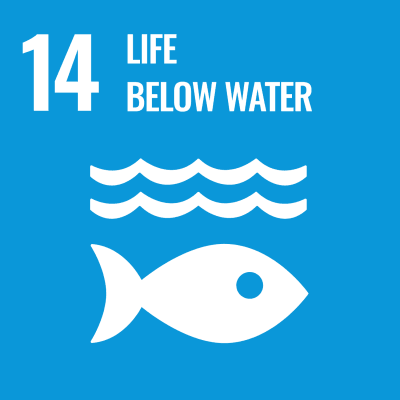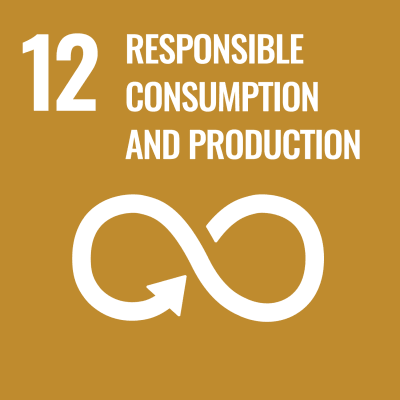-
Faculty of Science, Department of Zoology
- Professor
- Kazuyuki MEKADA
- Research Field
Laboratory Animal Science, Experimental Zoology
- Keyword(s)
Animal breeding and genetics
- Research theme
-
- Characterization of wild-derived animals
- Establishment and analysis of novel animal disease models
- Genetic background monitoring of laboratory mice
Outline of research activities


We investigate various biological characteristics such as genetics, morphology, physiological reproduction, and nutrition of wild animals, especially small mammals, through breeding and preservation of their breeding stock (e.g., suncus and voles). To elucidate the diverse biosystems in humans and other animals, we aim to create unique animal resources that enable us to obtain knowledge that is difficult to obtain with common laboratory animals (e.g., mice and rats) and to improve their added value.
- Desired cooperation
-
- Development of techniques for genetic monitoring of laboratory animals,
- Analysis of animal disease models, etc.
-
Faculty of Engineering, Department of Mechanical Systems Engineering
- Professor
- Kenya KUWAGI
- Research Field
Multi-phase flow, Powder technology, Fluidized bed engineering
- Keyword(s)
Heat transfer, Multi-phase flow, powder, Fluidized bed, Numerical simulation
- Research theme
-
- Powder simulation to improve blade of noodle dough mixer
- Thermal flow analysis of melted solder
- Mechanism of powder flow of vibrated granular beds
- Numerical simulation of heat transfer and fluid in an incinerator
Outline of research activities

There exist three states of matter, i.e. gas, liquid and solid and a flow in which two or three of these states are mixed is called a multi-phase flow. We analyze the flow and heat transfer of multiphase flows using numerical simulations and visualization systems. The thermal flow in the garbage incinerator and the dough mixing in the noodle dough kneader are analyzed as a flow of mixed solids and gases. Bubbles generated in the molten solder bath are analyzed as a flow of mixed liquid and gas. For such problems, we use open source code e.g. OpenFOAM for simulation. In order to visualize heat and flow, PIV, large-diameter Mach-Zehnder interferometer, system schlieren, and infrared thermal image analyzer are utilized.

- Desired cooperation
-
- Numerical simulation and visualization of powder/particles
- Development of energy/environmental facility
- Problems associated with fluid and/or heat transfer
-
Faculty of Life Science, Department of Bioscience
- Professor
- Ken-ichiro HAYASHI
- Research Field
Agrochemistry, Plant Science, Chemical Biology
- Keyword(s)
Plant hormone, auxin, Plant growth regulator
- Research theme
-
- Metabolic pathway of plant hormone auxin.
- Design and synthesis of auxin derivatives
- Development of plant growth regulator
Outline of research activities


We have been working on the mechanism of inactivation of the plant hormone auxin. In one of our research projects, we have discovered potent plant growth regulator, designated as KAKEIMIDE, which is a potent inhibitor of the GH3 enzyme that inactivate auxin. Auxin degradation inhibitor in plants can regulate auxin levels in various plant species, including crops, and thus promote rooting of cuttings and fruit set and enlargement of fruits.

- Desired cooperation
-
- Synthesis and evaluation of plant growth regulator
-
Faculty of Life Science, Department of Bioscience
- Professor
- Ryoji MITSUI
- Research Field
Applied Microbiology, Food Microbiology, Applied Enzymology, Microbial Ecology
- Keyword(s)
Symbiotic microorganisms, Enterobacterial metabolites, Fermented foods, Functional food materials
- Research theme
-
- Analysis of the plant growth-promoting effects of bacteria symbiotically associated with plant Leaves.
- Metabolism of food components by enterobacteria and its applications
- Research to extend the shelf life of food by controlling microbial growth
- Development of industrially applicable microorganisms and microbial enzymes for the production of fine chemicals
Outline of research activities



In our laboratory, we explore the untapped potential of microorganisms that play important roles in agriculture, food processing, and human health, both inside and outside our bodies. Our goal is to discover useful microorganisms with novel abilities and develop technologies to enrich our lives sustainably.

- Desired cooperation
-
- Screening of useful microorganisms and their utilization.
-
Faculty of Life Science, Department of Bioscience
- Associate professor
- Takahiro HAMADA
- Research Field
Plant Physiology, Cell Biology
- Keyword(s)
Cytoskeleton, microtubule, RNA granule
- Research theme
-
- Mechanism of microtubule regulation in plants
- Mechanism of environmental responses in plants
- Mechanism of small RNA in plants
Outline of research activities



Through advanced imaging techniques, biochemistry, and gene expression analyses, I work to understand the mechanisms of how plants adapt to changes in the environment.
(1) Mechanisms of Plant Motion and Growth Many people believe that plants do not move. However, the reality is that plants respond by sensing changes in light intensity, color, and temperature and moving. I focus on the behavior of microtubules in plant cells, which may be playing a key role in regulating plant motion and growth. This project tries to answer this classic, unanswered question in plant physiology, one that had been a focus of Charles Robert Darwin (1809-1882), the Father of Evolution.
(2) Mechanisms of Plant Environmental Responses To adapt to environmental change, plants must survive and reproduce through seed production because they cannot physically leave the place where their seeds germinate. In particular, my focus is on how plants adapt to higher temperatures. As we face the challenge of climate change and global warming, understanding mechanisms of biological adaptation to higher temperatures is critical.
(3) Functions of Small RNAs on Plant Embryogenesis and Development Small RNAs play important roles to regulate plant embryogenesis and developments. I discovered a novel gene expression mechanism involving small RNAs. This project tries to further develop this new field in plant physiology.
- Desired cooperation
-
- Advanced Agriculture
- Studies for plant monitoring and cultivation technologies
-
Faculty of Veterinary Medicine, Department of Veterinary Medicine
- Professor
- Akikazu SAKUDO
- Research Field
Food Safety, Virology
- Keyword(s)
Prion, Virus, Disinfection, Sterilization, Gas plasma, Ozone
- Research theme
-
- Non-thermal disinfection technology
- Anti-bacterial and anti-viral reagents and materials
- Novel sterilizers and inactivation mechanisms
Outline of research activities


Novel technologies to efficiently and safely disinfect agricultural products have been studied. We aim to contribute to food safety and security by developing innovative disinfection methods..

In addition, we have studied the effect of disinfectants against a range of pathogens on different materials, including influenza virus and feline calicivirus (a surrogate of human norovirus) as well as prions (most resistant pathogen). We also analyzed the likely mechanism of pathogen inactivation. Given our focus of research, we would like to collaborate with companies to assist in evaluating products as well as developing new technologies.- Desired cooperation
-
- Development of non-thermal technology in the field of food science
- Evaluation of anti-bacterial and anti-viral effects of products
- Product evaluation of sterilizers
-
Faculty of Veterinary Medicine, Department of Veterinary Medicine
- Professor
- Ryusei KUWATA
- Research Field
zoonosis, infectious diseases,
- Keyword(s)
zoonosis, wild animal, viruses
- Research theme
-
- Epidemiology for zoonotic diseases
- Transmission mechanisms and molecular biology of zoonotic diseases
- Ecology of wildlife and disease vectors
Outline of research activities




Among infectious diseases caused by pathogenic microorganisms such as viruses and bacteria, we are studying zoonoses, which are infectious diseases between animals and humans. In recent years, with the increasing distance between animals and humans and the improvement of diagnostic techniques for pathogenic microorganisms, it has become clear that a variety of zoonoses exist in the world and pose a significant threat to us and human society. Our research contributes to the prevention and control of these zoonotic diseases by clarifying how these pathogenic microorganisms are actually maintained in the field and the degree of risk they pose to humans and animals. We also conduct molecular biological studies using actual pathogens and various types of cultured cells to evaluate pathogenicity and elucidate the mechanisms of pathogen transmission.

- Desired cooperation
-
- Biotechnology (for vaccine development and diagnosis)
- Pathology
- Reserch on wildlife
-
Faculty of Veterinary Medicine, Department of Veterinary Medicine
- Associate professor
- Akira Goto
- Research Field
Farm Animal Veterinary Medicine
- Keyword(s)
Theriogenology, Preventive veterinary medicine
- Research theme
-
- Evaluation of production problems using production records.
- Improving reproductive performance of cattle
- Bovine clinical case study
Outline of research activities

Prospective veterinary medicine for farm animals should endeavor to augment productivity by incorporating strategies to combat production maladies, all the while actively contributing to the prevention and containment of infectious diseases. Through a focused emphasis on theriogenology and herd health management, our aim is to undertake research endeavors that elucidate the etiology, mechanisms, and pathogenesis of diseases in both individual animals and populations, with the overarching objective of advancing diagnostic and therapeutic methodologies.

- Desired cooperation
-
-
Faculty of Veterinary Medicine, Department of Veterinary Medicine
- Associate professor
- Tohru MEKATA
- Research Field
Fish pathology, Comparative Immunology
- Keyword(s)
Aquatic pathogens, Disease prevention, Innate immunity
- Research theme
-
- Exploring pathogenic factors in fish and shellfish
- Disease control of farmed fish and shellfish
- Shrimp immunity
Outline of research activities

Two major research themes have been addressed. The first is the identification of novel pathogens and the development of disease control methods for fish and shellfish. In aquaculture farms, mortality caused by unidentified diseases is often observed. The causative factors are quite complex including deterioration of the environment, nutritional disorders, and outbreak of infectious diseases. With recent advances in aquaculture technology, the targeted species for aquaculture have expanded, and new infectious diseases have been reported one after another. Therefore, we are exploring the pathogens using a comprehensive genetics approach to develop the diagnosis methods and control the diseases. Second, we are also studying the unique immune system in shrimp. As invertebrates, shrimp have no adaptive immune system like vertebrates. However, they show some resistance to re-infection of particular pathogen, like a phenomenon known as “immunological memory”. We hope to elucidate the mechanism of this phenomenon and propose new disease control measures to improve productivity.
- Desired cooperation
-
- Histopathological research on emerging diseases
- Molecular epidemiology of aquatic pathogens
- Development of advanced aquaculture techniques
-
Faculty of Veterinary Medicine, Department of Veterinary Medicine
- Lecturer
- Kei HAYASHI
- Research Field
Parasitology, Veterinary Parasitology, Phylogeny
- Keyword(s)
Parasite, Trematode, Cestode, Nematode, Helminth
- Research theme
-
- Relationship between the parasite evolution and their host.
- Parasite dynamics, pathogenesis and morphological and molecular characters.
- More usuful diagnosis and identification methods for parasites.
Outline of research activities





I analyze influences of biogeographic phenomena such as evolution and migration of host animals on parasite distribution or population using molecular phylogenetic analyses. I’m also conducting research on the mechanisms of migration and pathology of helminths in their host.

- Desired cooperation
-
- Experimental biological research of parasitic helminths.
- Biogeographic study of host livestocks and wild animals.
-
Faculty of Veterinary Medicine, Department of Veterinary Medicine
- Assistant professor
- Takuya KANDA
- Research Field
Food safety and Food Microbiology, Bacteriology, Animal Health
- Keyword(s)
Mycoplasma bovis, adhesion, Loop-mediated isothermal amplification, HACCP
- Research theme
-
- The factor of Mycoplasma bovis adhesion in infection
- The rapid detection of bacteria
- Assessment of microbial contamination risk in meat products
Outline of research activities




Food hygiene is expected to more important due to HACCP and export of meat and marine product.
Pneumonia is a common disease in feedlot, and Mycoplasma bovis may be involved. The bacteria occur such as pneumonia, mastitis, and arthritis. Endocarditis, which causes lesions in the heart, is occasionally observed at slaughterhouses (Fig). The researches of adhesive factors for vaccine development leads to a stable supply of meat product.
Enterohemorrhagic Escherichia coli (EHEC, STEC), Salmonella, Campylobacter,which are known to be food poisoning, are tested at the Meat Inspection Center. The study of food microbiology that have attracted attention in recent years, such as Clostridium perfringens and Listeria monocytogenes, makes to improve food safety.

- Desired cooperation
-
- Resareches on adhesion of Bacteria to host cell
- The rapid detection of bacteria using LAMP and PCR etc...
-
Institute for the Advancement of Higher Education,
- Professor
- Yoko HASEBE
- Research Field
Educqtion, Socilology, Psyco-sociology
- Keyword(s)
Educqtion, Inter-linguistic & cultural communication, Social transformation, Agriculture and food culture,
- Research theme
-
- interlinguistic and intercultural communication based on the field of education, and its curriculum design and teaching methods
- Social transformation based on the field of education
- Sustainable collaboration model: among public sectors, private sectors, local communities, universities.
Outline of research activities









Specializes in education through teaching materials, methods, curriculum design, teachers’ training for inter-linguistic and intercultural communication based on social psychology. In 2007, started “Primary School Project” in Democratic Republic of Congo through intercultural collaboration, has continuously introduced how to create an atmosphere for “mutual collaboration” and “sustainable relationship” with the local community, and is always working with young researchers on the fieldwork-based approach in exploring how to interpret social and cultural phenomena in local communities to develop a model school for the area. We have other related projects in Kagoshima, Yamaguchi, Nagano, Kanagawa, Akita, Aomori.
As my specialty is interlinguistic and intercultural communication based on education, and I am researching its curriculum design and teaching methods. Generally, when we think about intercultural communication, it is exchange with foreign countries that comes to mind. However, even when we are talking with Japanese people, a word can often be interpreted completely differently by the other person, due to individual understandings of the image evoked by that particular word that arises from our diverse backgrounds. Nevertheless, there is the mistaken impression that sharing a language or an interpretation equals understanding, and major communication gaps can arise before we know it.
What is more, my special field of research is the creation of environments for interlinguistic and intercultural communication that generate these kinds of “discoveries.” What steps are required, what kind of settings do we need to create, and what kind of program do we need to assemble? This involves developing a curriculum design, creating an environment that generates sustainable shared understandings as quickly and naturally as possible, and coming up with the methodology to teach the required content and language, for example. We are undertaking this research by putting these concepts into practice through specific projects.- Desired cooperation
-
- Researches on collaboration of education x local community x city design x agriculture and food
- Researches on activating public educational system
- Researches on the process of collaboration between local community and university

